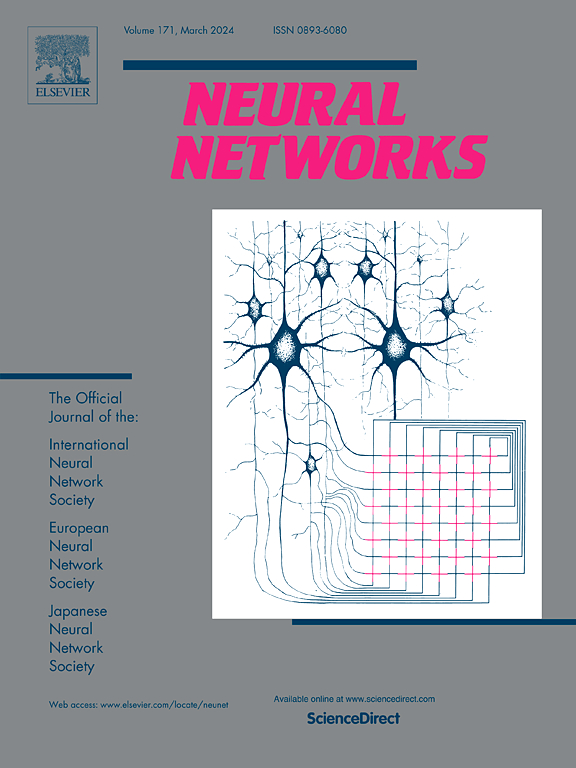Frequency Self-Adaptation Graph Neural Network for Unsupervised Graph Anomaly Detection
IF 6
1区 计算机科学
Q1 COMPUTER SCIENCE, ARTIFICIAL INTELLIGENCE
引用次数: 0
Abstract
Unsupervised Graph Anomaly Detection (UGAD) seeks to identify abnormal patterns in graphs without relying on labeled data. Among existing UGAD methods, Graph Neural Networks (GNNs) have played a critical role in learning effective representation for detection by filtering low-frequency graph signals. However, the presence of anomalies can shift the frequency band of graph signals toward higher frequencies, thereby violating the fundamental assumptions underlying GNNs and anomaly detection frameworks. To address this challenge, the design of novel graph filters has garnered significant attention, with recent approaches leveraging anomaly labels in a semi-supervised manner. Nonetheless, the absence of anomaly labels in real-world scenarios has rendered these methods impractical, leaving the question of how to design effective filters in an unsupervised manner largely unexplored. To bridge this gap, we propose a novel Frequency Self-Adaptation Graph Neural Network for Unsupervised Graph Anomaly Detection (FAGAD). Specifically, FAGAD adaptively fuses signals across multiple frequency bands using full-pass signals as a reference. It is optimized via a self-supervised learning approach, enabling the generation of effective representations for unsupervised graph anomaly detection. Experimental results demonstrate that FAGAD achieves state-of-the-art performance on both artificially injected datasets and real-world datasets. The code and datasets are publicly available at https://github.com/eaglelab-zju/FAGAD.
无监督图异常检测的频率自适应图神经网络
无监督图异常检测(UGAD)寻求在不依赖标记数据的情况下识别图中的异常模式。在现有的UGAD方法中,图神经网络(gnn)通过过滤低频图信号,在学习有效的检测表示方面发挥了关键作用。然而,异常的存在会使图信号的频带向更高的频率移动,从而违反gnn和异常检测框架的基本假设。为了应对这一挑战,新型图过滤器的设计引起了人们的极大关注,最近的方法以半监督的方式利用异常标签。尽管如此,在现实场景中缺乏异常标签使得这些方法不切实际,留下了如何以无监督的方式设计有效过滤器的问题在很大程度上未被探索。为了弥补这一差距,我们提出了一种新的用于无监督图异常检测(FAGAD)的频率自适应图神经网络。具体来说,FAGAD使用全通信号作为参考自适应融合多个频段的信号。它通过自监督学习方法进行优化,能够为无监督图异常检测生成有效的表示。实验结果表明,FAGAD在人工注入数据集和实际数据集上都达到了最先进的性能。代码和数据集可在https://github.com/eaglelab-zju/FAGAD上公开获取。
本文章由计算机程序翻译,如有差异,请以英文原文为准。
求助全文
约1分钟内获得全文
求助全文
来源期刊

Neural Networks
工程技术-计算机:人工智能
CiteScore
13.90
自引率
7.70%
发文量
425
审稿时长
67 days
期刊介绍:
Neural Networks is a platform that aims to foster an international community of scholars and practitioners interested in neural networks, deep learning, and other approaches to artificial intelligence and machine learning. Our journal invites submissions covering various aspects of neural networks research, from computational neuroscience and cognitive modeling to mathematical analyses and engineering applications. By providing a forum for interdisciplinary discussions between biology and technology, we aim to encourage the development of biologically-inspired artificial intelligence.
 求助内容:
求助内容: 应助结果提醒方式:
应助结果提醒方式:


